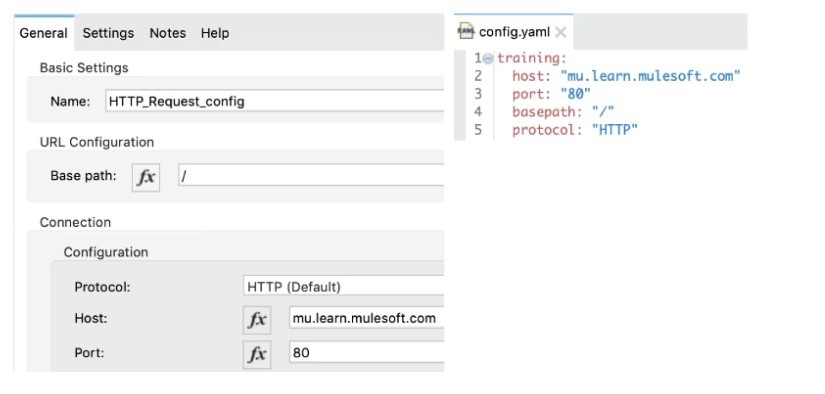
- Email support@dumps4free.com

Refer to the exhibits. 
The Set Payload transformer In the addltem subflow usesDataWeave to create an order
object. What is the correct DataWeave code for the Set Payload transformer in the createOrder
A.
addltemf { payload: { price: "100", item: "router", itemType: "cable" } > )
B.
lookupf "addltem", { payload: { price: "100", item: "router", itemType: "cable" } } )
C.
addltemf { price: "100", item: "router", itemType: "cable" })
D.
lookupf "addltem", { price: "100", item: "router", itemType: "cable" } )
lookupf "addltem", { payload: { price: "100", item: "router", itemType: "cable" } } )
Refer to theexhibits.
A Mule application has an HTTP Request that is configured with hardcoded values. To
change this, the Mule application is configured to use a properties file named config.yaml.
what valid expression can the HTTP Request host value be set to so that it is no longer
hardcoded?
A.
${training.host}
B.
${training:host}
C.
#[training:host]
D.
#[training.host]
${training.host}
A web client sends a request to http;//localhost:8081?dept=sales. What is the correct DataWeave expression to access the value of dept?
A.
attributes.queryParams.dept
B.
attributes.dept
C.
message.queryParams.dept
D.
vars.dept
attributes.queryParams.dept
Refer to the exhibits.
A web clientsends a GET request to the HTTP Listener.
What response message is returned to the web client?
A.
""
B.
"End"
C.
"Start"
D.
"String is not blank"
"String is not blank"
Refer to the exhibit
A.
Option A
B.
Option B
C.
Option C
D.
Option D
Option A
| Page 10 out of 46 Pages |
| Previous |